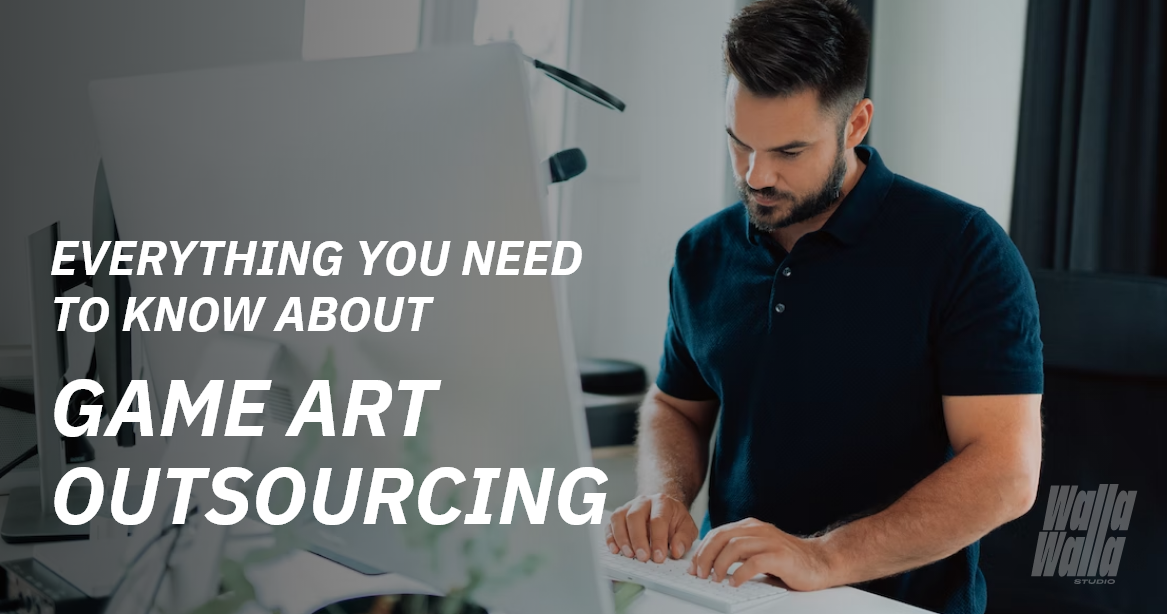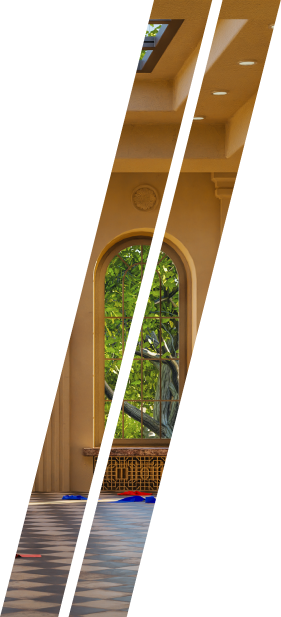 Search
Search

Cost optimization is a popular marketing mantra bouncing around businesses and industries. Many understand its meaning to benefit in practice. Others suppose they understand. Some commercial activities easily adopt such a cost-optimizing approach as outsourcing. Others have no straightforward outsourcing algorithms without the danger of degrading quality.
Outsourcing is a habitual method of cost optimization for manufacturers: the rise of the Chinese economy over the last three decades is the best proof of that. Outsourcing keeps gaining popularity among software development companies as well. Whole clusters of outsourced developers have been established in Eastern Europe, India, and some other locations. Outsourcing does really work, it saves costs, it brings competitive advantages.
And yet some sectors remain quite reluctant to outsource their specific projects. At least, no outsourcing craze is observed in them. The game art design is still unlikely rampant in this context. Are there objective reasons to keep game developers from optimizing their costs that way? What misconceptions hinder game art outsourcers? And which nuances are worth knowing to adopt game art outsourcing by game creators?
Walla Walla Studio is sharing experience-based insights regarding the issue with this. Read and learn how to save with game art outsourcing securely.

To Outsource or Not to Outsource?
A typical game development process has some specific bottlenecks that can encourage developers to outsource some work and, surprisingly, discourage them from doing so simultaneously. What causes such ambivalence?
Many game development companies hesitate to involve external contractors, especially when a previous successful experience in video game art outsourcing is unavailable. Sharing any business with others is a matter of trust, isn’t it? The game art creation is a somewhat sensitive issue not to be lightheartedly outsourced to anyone external.
What if a contractor violates delivery deadlines? What if a finished art design won’t meet the customer’s expectations? What if miscommunication between an in-house team and a contractor can turn the entire pipeline into a mess? Many fearful assumptions may come to mind of game developers amid quite a clear opportunity to save and, therefore, earn significantly through outsourcing game art.
Realizing objective benefits of game art outsourcing helps debunk many, if not all, concerns of such a sort.

1. Solving staff problem
A lack of in-house artists pushes many game development companies to seek third-party contractors. A rich deal for a new game is in hands, but the available designers’ team is not enough to cope with the upcoming tasks. Sound familiar?
Recruiting agencies are to the rescue, of course. But what about job interviews, training, onboarding, and other inevitable consequences of in-house employment? In most cases, an attempt to hire extra in-house designers for a one-time project is nothing but an exercise in futility: time and effort spent appear too resource-consuming to apply. Besides, talented game artists are rare birds to be easily found and hired.
Outsourcers can solve the staffing problem for each particular contract. They offer true professionals (whose recruitment has taken years in many cases, by the way) ready to get to the job with almost zero adaptation. They won’t become problematic idle staff after the job is done. Instant mitigation of the staffing problem is a sufficient reason to practice game art outsourcing. Especially in such a special segment as game art designing.
2. Reducing operating expenditures
A cursory glance at the extra staff issue tolerates to overlook some indirect expenditures that each new team member entails. The salary is only the tip of the iceberg. What about taxes, hardware, workplace facilities, catering, office supplies, safeguard/cleaning services, etc? Each new in-house team member adds a hardly ignorable part to the overall operating costs. How to make sure it is worth paying?
Outsourcers, on the other hand, bear all operating expenditures. They provide game developers with pure labor and expertise and, therefore, earning opportunities. Reducing operating expenditures is among the essential game art outsourcing things to know.
3. Expanding professional vision
Even a very experienced game development company cannot know all the nuances of the art design. Game developers can have quite a deep understanding of technical approaches used by designers. But highly unlikely they see things as true artists do. A mere lack of an artistic vision can lead game developers to reputational risks resulting from poorly met customer expectations. And a dissatisfied customer is a lost customer, as we know.
Game art outsourcing studios can offer unique professional expertise to any game development company. They address seemingly trivial tasks from an unusual angle. They help game developers impress their customers with unexpected artistic visions and vivid imaginations. And, as we know, an impressed customer is a retained customer.
Besides, game art outsourcers continuously track all fresh trends in game design to follow the zeitgeist. Staying always up-to-date is a matter of survival for them. Can any game development company afford to be aware of all new art design techniques?
4. Releasing valuable resources
When a portion of designing work is outsourced, game developers can redirect a certain amount of labor resources and mental efforts toward the tasks, which would be postponed indefinitely otherwise. The released resources can potentially bring some additional profit. The profit (if calculable) can be deducted from the cost of game art outsourcing.
As a result, game developers can receive professionally created art designs for relatively ridiculous money. Moreover, a multistage self-perpetual mechanism starts working. The bigger the share of designing works outsourced, the more the internal resources released. The larger the profit from the released resources, the cheaper the resulting game art outsourcing service. Start over.
5. Providing cost savings
Suppose a game development company has an in-house team sufficient for completing all upcoming art designs within a project. Suppose the company is from the USA. Suppose the project budget is tight, and the company has embarked on the deal just to hold its market position while net profit converges toward zero. Quite a typical situation for a free market with severe competition, isn’t it?
How to see the situation through a less gloomy outlook? Game art outsourcing can help. What if the in-house designers can be engaged in other projects with more explicit margins? What if they outsource the current art design to a studio from Eastern Europe with half the hourly rates compared to local prices? What if their executives get rid of the “work for work’s sake” modus operandi to protect the already occupied market niche?
Business is always about profit: a dollar saved is a dollar earned. Period. Any other paradigm is irrelevant to commercial activities. Outsourcers as such exist to increase their customers’ returns on production costs. They participate in the global division of labor based on still diverse national economies. They simply follow the “demand creates supply” free market principle allowing them to do work cheaper in one location than in others.
6. Mitigating risks
Game art outsourcing may look risky at first glance. A superficial understanding is often mistaken. The truth is quite the opposite: outsourcers mitigate risks, not create them. For example, an infamous vision of outsourcers as irresponsible contractors comes from nothing but biases and subconscious fears.
- It is hard to imagine a game art outsourcing studio that can withstand competition with rivals while regularly violating contractual obligations. Look at the situation from the perspective of total interconnectivity: a single negative testimony from a deceived customer can immediately destroy the studio’s reputation and wipe it away from the market. For any outsourcer, reputation is barely less important than expertise.
- Professional competencies belong to another sort of doubt about external contractors: can they execute what they declare? It is crucial to understand that outsourcers are practitioners, not theorists. They earn their living by completing orders, not ranting about them. They meticulously collect all executed projects to demonstrate one or another expertise with real examples. A portfolio is a point of pride for every outsourcer.
- Possible miscommunication due to remote interactions is also included in the range of alleged risks. Responsible contact persons should inform a customer about every aspect of the outsourced designing process. In many cases, communication between a game development company and an art design outsourcer appears more frequent and intensive than between the customer’s executives and in-house staff. It happens because every outsourcer takes customer satisfaction as a primary goal, and any arbitrariness due to a lack of communication is considered mauvais ton.
Outsourcers bent over backwards to mitigate whatever risk we may consider to gain a reliable business partner reputation. The vast majority of outsourcers from various sectors live and act under the win-win strategy that is the key to their business success.
5 Tips for Successful Game Art Outsourcing
In order to get the most from cooperation with game art outsourcers, we can suggest a particular algorithm of time-tested steps.
1. Spare no effort to monitor the outsourcing market
However narrow the segment of game art outsourcing may seem, the choice between a few similar contractors is always available. Since signing a contract is a serious decision, it is better to choose the most appropriate partner in advance. Hourly rates, customer testimonials, a portfolio, and even a time zone can be the general drivers to either choose or reject one or another game art outsourcer.
At the same time, some peculiar capabilities can appear as the decisive factors in hiring a particular contractor: a one-of-a-kind artistic style, hand-drawing faculties, custom-made VFX, skills in blockchain gaming, deep understanding of the NFT market, unique expertise in 3D skin shaders, you name it.
To figure out whether a prospective outsourcer is strong in the design essential for you, surfing through its website may not be sufficient. Live communication with the team can help. However, you should know what you expect from a game art outsourcing studio to have fruitful communication. Simply put, a clear brief of your requirements should be prepared beforehand.
2. Create a detailed specification of your project
Conversations with a selected game art outsourcer on general topics can hardly help you foresee whether the current project can be reliably outsourced. A lack of clearly specified tasks makes even very customer-centric contractors feel confused in futile attempts to determine whether they match your requirements.
To avoid regretful misunderstandings, a detailed specification of the project you are recommended to create. The more inputs you provide, the more predictable delivery can come from your contractor. Specifying the design details does not imply you do a part of the contractor’s job: you can define project requirements in plain language. True professionals can always recognize the core idea in your descriptions.
3. Take care of your intellectual rights
A custom-made design of any in-game item is potentially a valuable digital asset. Decent things rarely belong to nobody: property rights apply to anything with a monetizable value. Signing a non-disclosure agreement is a well-tested practice of intellectual rights protection. Even though hundreds of typical NDA templates are available on the internet, an individually drafted one seems preferable.
Clearly define the in-game asset for which a game art outsourcer should create a design. Indicate the conditions and circumstances under which your intellectual rights for the asset are violated. Make sure that your contractor understands all NDA provisions equally to how you do. In other words, do your best to discourage outsourcers from tolerating intellectual rights violations. Better safe than sorry, as they say.
4. Don’t be shy to check the outsourcer’s qualification
A portfolio of the already fulfilled projects reveals the domain where a game art outsourcing studio feels the best. However, every design project is unparalleled to have any complete analog in the past. Besides, it never hurts to make sure that the contractor’s skills are in tune with your expectations. Practice helps in it as little else does.
Propose completing a test task to your future contractor. True professionals will never refuse since they know what they are worth. Besides, successfully fulfilled trial projects automatically eliminate a ton of hesitations and redundant questions that would take place otherwise. If the upcoming design is not about a premium-class game, the test task should have a reasonable level of complexity (a limited number of polygons, textures, etc.) to show that you appreciate your contractor’s time.
5. Participate in the designing pipeline
Signing a contract with a game art outsourcing company does not mean you may completely retire from the design process. On the contrary, the resulting quality depends directly on the degree of collaboration between you and your contractor over the entire pipeline. Besides, any experienced outsourcer can hardly agree to leave you alone for a contracted period: bearing full responsibility for a possible mismatch between final designs and customer expectations is beyond a regular outsourcing practice.
Questions and hesitations about one or another design aspect will inevitably emerge along the way. Neither you nor your contractor is interested in leaving them unaddressed. Establish a solid protocol of communication with your outsourcer with responsible contact persons from both sides and at mutually convenient hours (remember that you may live in different time zones). Thoroughly check all transitory designs to initiate necessary revisions before the project is finished. Collaborate with your contractor under the famous “trust but verify” principle to face no unpleasant surprises at the end of the day.
Types of Art Design Outsourcing
The game art design can be broadly classified into two big branches: 2D artwork and 3D one. Game art outsourcing corresponds to them, respectively.
2D Game Art Outsourcing
Backgrounds, UI elements, characters and objects for 2D games constitute the main range of 2D art designs for gaming. Besides, hand-drawn sketches, layouts, and storyboards belong to a supplementary 2D domain for 3D graphics. Any 2D game art design can theoretically be outsourced to external contractors.
Some specific 2D design activities tend to be outsourced in most cases. They stay beyond the typical expertise of game development companies, even if they are full-cycle ones. Storyboarding of new gameplay, when strong artistic skills in hand drawing are required, is an example of such designing works worth outsourcing to third-party 2D professionals.
Some 2D game art outsourcing studios provide a full scope of 2D design services, from the game plot conceptualization to refining finished in-game objects with VFX. Others can execute just a part of the scope. Only a few 2D graphic outsourcers worldwide are able to introduce their own ultimately original 2D artistic styles. Even fewer ones can design custom 2D artworks applicable to video games.
3D Game Art Outsourcing
Ready-to-use 3D renders, photorealistic illustrations, skins, shaders, and 3D VFX belong to the range of products provided by 3D game art outsourcing services. The scope of work performed under the services may significantly vary from project to project. Some game development companies outsource routine repetitive tasks to release their in-house designers for more creative assignments. Others seek a full-range 3D designing service when a game character, for instance, should be designed entirely from scratch.
Besides, some specific 3D designing services are outsourced to those game art studios focusing on particular domains within 3D graphics. Some may be great at lifelike simulations of environmental effects like rain, fog, wind, and the like. Others are excellent at textures and skin shaders, etc.
Sometimes, game creators are tempted to distribute different 3D tasks among several narrow-specialized outsourcers. It makes sense in terms of the price/quality ratio while being insecure from the organizational perspective: too long delivery chains appear. Man proposes, but God disposes, as they say. Force majeure happens unexpectedly as a rule. One failed link from the delivery chain can affect the entire project. To outsource 3D designs to a universal all-in-one game art studio is more reasonable, therefore.
How Much Does Game Art Outsourcing Cost?
Outsourcing as such is invented to optimize production costs. Hence, it is taken for granted that game art outsourcing services are cheaper than similar in-house ones. It works not for every use case, however. Lower hourly rates become a secondary issue when the staffing problem makes game developers spend time on some additional designers’ recruitment. Time is money, especially in light of tight development schedules inherent in the gaming industry.
Hence, nothing special is in the situation when game creators pay their in-house rates to outsourcers to mitigate the risk of disrupting the development deadlines. The delivery schedule is one of the primary pricing factors for outsourcers: the more hectic the schedule, the higher the hourly rates.
Game art outsourcing business-as-usual, nonetheless, implies lower hourly rates compared to in-house ones to follow the cost optimization paradigm. Announcing some exact figures doesn’t sound fair: input conditions and, consequently, hourly rates can be very distinct from project to project. Only approximate proportions are legitimate to articulate: East-European game art outsourcers usually have half the rates of American in-house designers, for instance.
Anyhow, all outsourcers tend to issue precise price quotations only against direct inquiries from potential customers with clear project specifications.
Create Original Game Art with Walla Walla Studio
Unlike many game art outsourcers, Walla Walla Studio does not limit customers in types of game-relevant artworks to be designed. Whichever in-game asset you may need within a development project, Walla Walla dares to be capable of creating it at any level of complexity. We are proud to have numerous grateful customers in both 2D and 3D game art domains. Our portfolio shows what we can perform for customer-friendly outsourcing rates.
You are always welcome to contact our experienced communication managers to discuss any game art topic you may be interested in. Our experts can help you create a comprehensive project brief to get an attractive price offer from our executives. Give up your hesitations to start benefiting from the best game art outsourcing services with Walla Walla!


